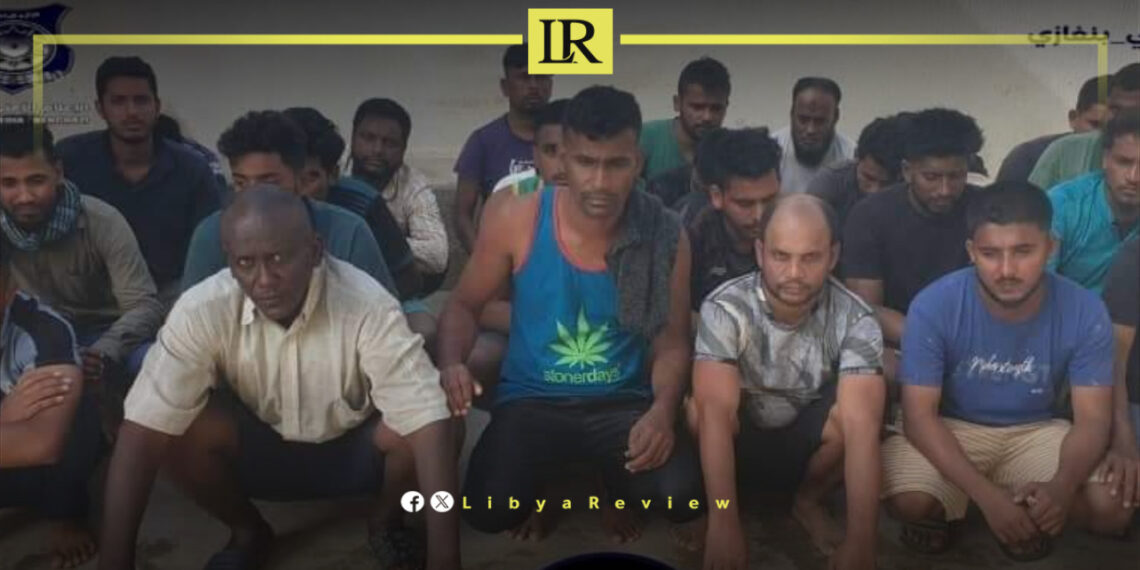Authorities in Benghazi have thwarted an attempt by migrants to cross into Europe from a beach in the Sidi Khalifa area.
According to a statement by the Benghazi Security Directorate on Thursday, patrols from the Sidi Khalifa Police Station, tasked with monitoring the coastline, spotted a group of migrants trying to set sail on a boat.
The patrols stopped the migrants, who were identified as Bangladeshi nationals, and found them in possession of fuel canisters.
The migrants were taken to the police station and subsequently transferred to the relevant authorities for further processing ahead of their deportation to Bangladesh.
On Saturday, Libya’s coast guard intercepted 64 Europe-bound migrants and brought them back to shore, just days after a deadly shipwreck off the country’s coast left nearly two dozen people dead or missing.
The migrants were stopped near the northwestern town of Sirte, according to the local coast guard unit, which posted images of the group on social media. The intercepted migrants included at least one woman and a child. In a standard practice to prevent traffickers from reusing vessels, the Coast Guard burned the migrant boat after the operation.
This rescue follows a tragic incident earlier in the week. On Wednesday, a boat carrying 32 migrants from Egypt and Syria capsized off the coast of Tobruk, eastern Libya. The Libyan coast guard was able to save nine people and recover one body, while 22 others remain missing and are presumed dead. These back-to-back incidents highlight the ongoing dangers faced by migrants attempting to cross the Mediterranean Sea to reach Europe.
Since the fall of Moammar Gadhafi in 2011, Libya has descended into chaos, with multiple factions battling for control over the country’s wealth and resources. This instability has made Libya the primary transit hub for migrants from Africa and the Middle East trying to escape war and poverty in search of better lives in Europe.
With its long Mediterranean coastline and porous borders with six neighboring countries, Libya has become a prime target for human traffickers. They smuggle migrants across its borders, pack them onto overcrowded and often unsafe vessels, and send them on perilous journeys to Europe. The migrants, many of whom are fleeing conflict and poverty, face significant risks during these voyages, which often end in tragedy.
The Mediterranean remains one of the most dangerous migration routes in the world. According to the International Organization for Migration (IOM), at least 434 migrants have been confirmed dead, and 611 more are missing in the waters off Libya between January and August 2023. During that time, over 14,100 migrants were intercepted by the Libyan coast guard and returned to shore, underscoring the scale of the migration crisis.
Despite being rescued from the sea, many migrants face grim conditions upon their return to Libya. They are often held in government-run detention centers where widespread reports of human rights abuses—including forced labor, beatings, sexual violence, and torture—are common.
According to U.N.-commissioned investigators, these abuses may amount to crimes against humanity. Migrants are often exploited in detention, with their captors extorting their families for ransom before releasing them or allowing them to be sent back to Europe on another dangerous smuggling boat.


